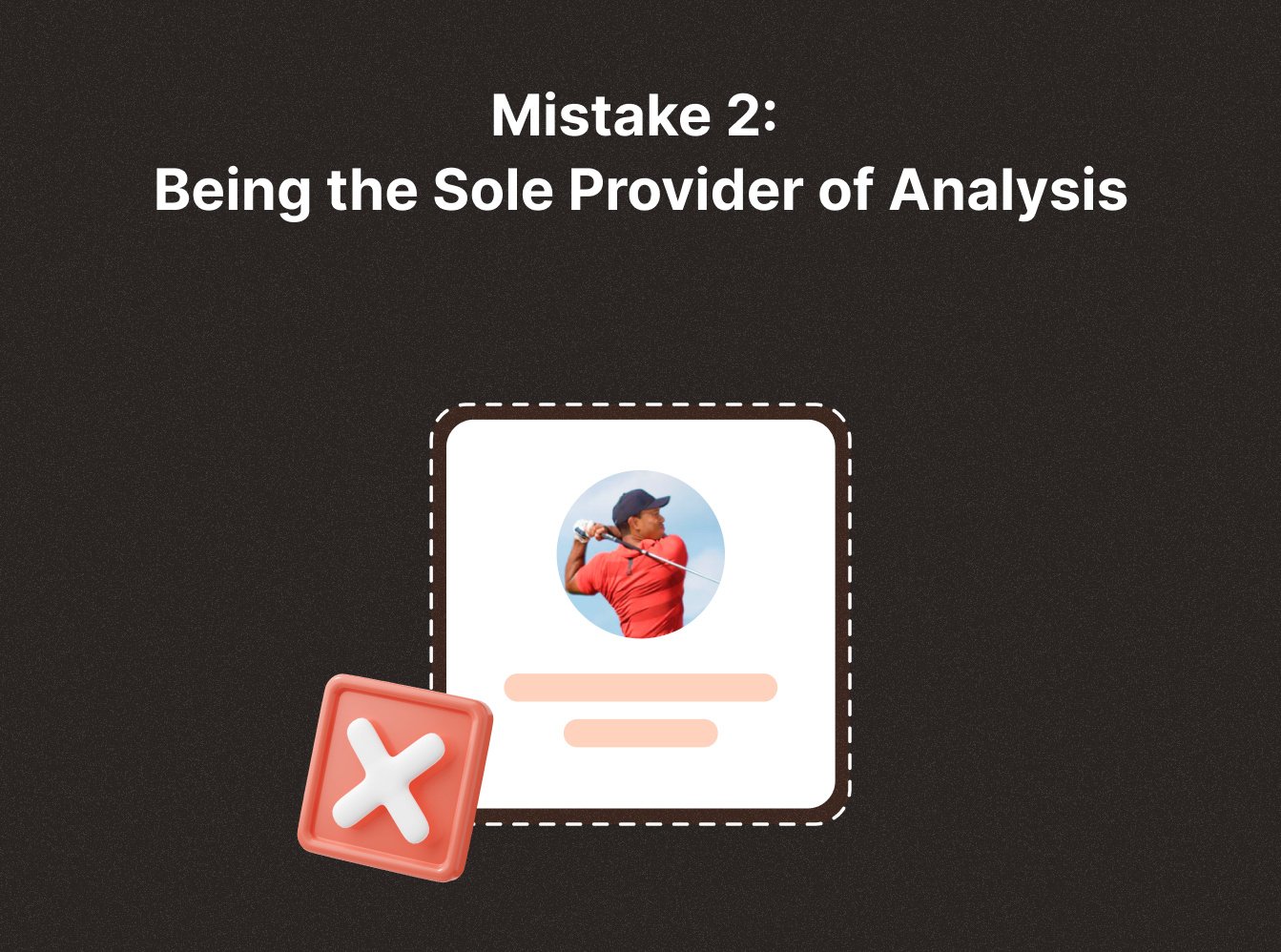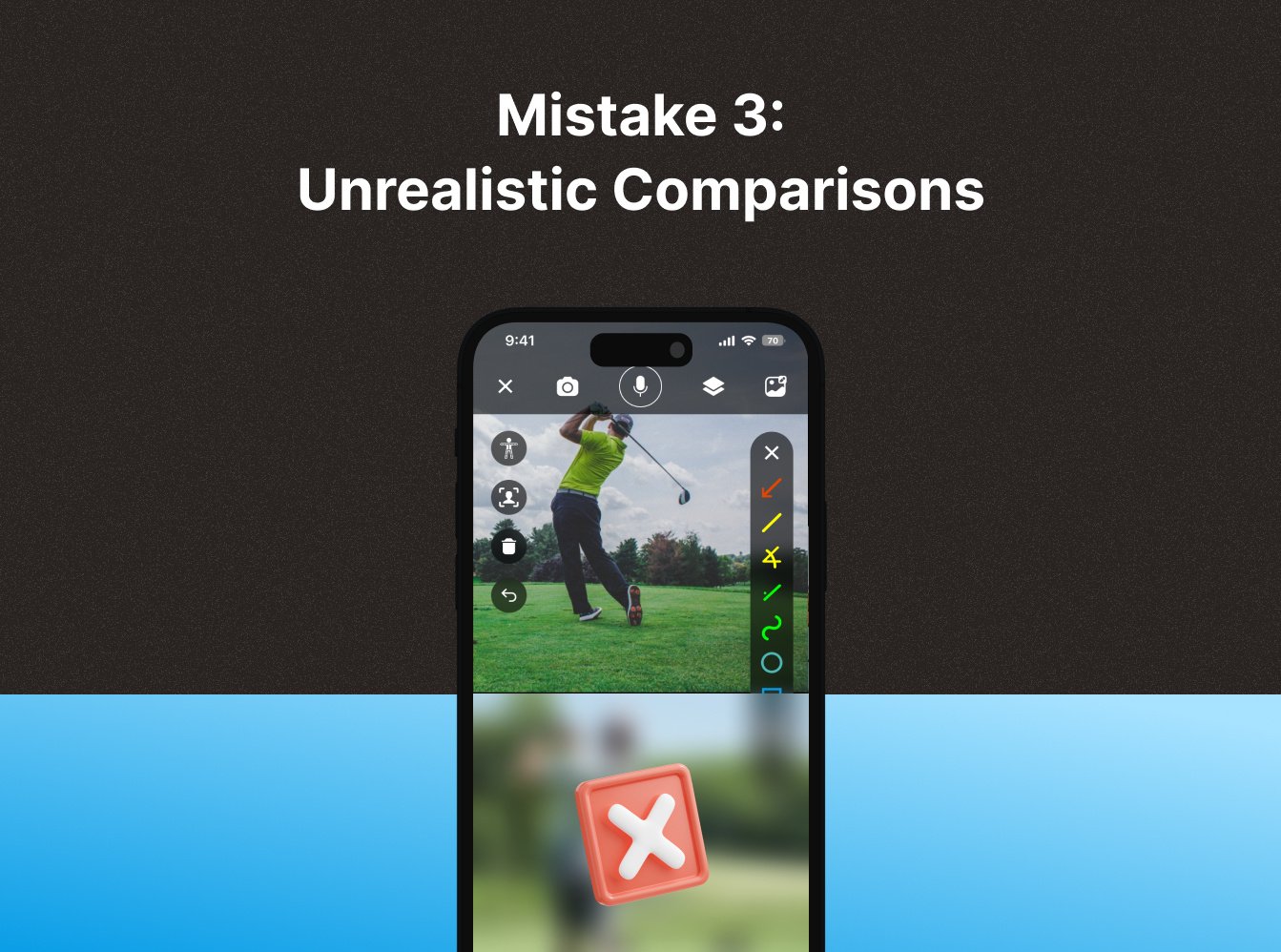I’ll level with you: video analysis isn’t everything.
It’s an incredibly powerful tool, but it’s only ONE piece of the puzzle when it comes to helping your athletes improve as efficiently as possible.
And moreover, it’s ONLY valuable if it improves you and your athlete’s COMMUNICATION and creates a SHARED UNDERSTANDING for your coaching relationship.
Coaches who claim video analysis isn’t necessary often fail to understand this point. First, they often hold a misguided belief thinking video analysis is a silver bullet. And then when it doesn’t live up to those lofty expectations, they swing to the other end of the spectrum and hold a misguided belief that it’s a waste of time.
To set the record straight, when done correctly, Video analysis is a game-changer in coaching, offering insights that empower both coaches and athletes alike. But in order to reap the benefits of video analysis, you must first learn to use it correctly.
In this post, we'll dive into the specific mistakes to avoid and the benefits you'll reap by sidestepping them.
I’ve made a lot of these points in previous posts. So if you’d like more on each, just follow the links in each section.
Let’s get to it.
It’s an incredibly powerful tool, but it’s only ONE piece of the puzzle when it comes to helping your athletes improve as efficiently as possible.
And moreover, it’s ONLY valuable if it improves you and your athlete’s COMMUNICATION and creates a SHARED UNDERSTANDING for your coaching relationship.
Coaches who claim video analysis isn’t necessary often fail to understand this point. First, they often hold a misguided belief thinking video analysis is a silver bullet. And then when it doesn’t live up to those lofty expectations, they swing to the other end of the spectrum and hold a misguided belief that it’s a waste of time.
To set the record straight, when done correctly, Video analysis is a game-changer in coaching, offering insights that empower both coaches and athletes alike. But in order to reap the benefits of video analysis, you must first learn to use it correctly.
In this post, we'll dive into the specific mistakes to avoid and the benefits you'll reap by sidestepping them.
I’ve made a lot of these points in previous posts. So if you’d like more on each, just follow the links in each section.
Let’s get to it.

Mistake 1: Overcomplicating Your Feedback
When it comes to video analysis, less is more.
I’ve said it before and I’ll say it again: don’t overcomplicate your feedback.
I get it.. It's tempting to inundate videos with overlays, annotations, and other things you notice.
But, truth is, if you give too much feedback at once, it’s unlikely to stick with your athlete. They’ll be overwhelmed and forget almost all of it.
That’s why I always suggest focusing on 1-2 actionable insights per video.
Remember, progress thrives on incremental changes.You can always give more feedback later, once they show the progress on your initial feedback.
Don’t make the mistake of trying to fix everything at once. Keep it concise and actionable. Your athletes will thank you for it.
Plus, less feedback often means more time saved on your end.
I’ve said it before and I’ll say it again: don’t overcomplicate your feedback.
I get it.. It's tempting to inundate videos with overlays, annotations, and other things you notice.
But, truth is, if you give too much feedback at once, it’s unlikely to stick with your athlete. They’ll be overwhelmed and forget almost all of it.
That’s why I always suggest focusing on 1-2 actionable insights per video.
Remember, progress thrives on incremental changes.You can always give more feedback later, once they show the progress on your initial feedback.
Don’t make the mistake of trying to fix everything at once. Keep it concise and actionable. Your athletes will thank you for it.
Plus, less feedback often means more time saved on your end.

Mistake 2: Being the Sole Provider of Analysis
Another misstep is assuming sole responsibility for video analysis.
Some Coaches are surprised by this tip… But just because you’re the coach doesn’t mean you’re the one who has to analyze every video.
Your goal should be to empower your athletes to take ownership of their development. Teach them how to dissect their technique on their own, help them be empowered with this tool and you’ll foster a deeper understanding of their progress.
That’s because they’ll no longer just be a passive learner, they’ll be an active participant in their own athletic development. You're not gonna be there every time they practice. So give them the analytical skills that cultivates their own independence, resilience, and the capacity to make technical progress with you and while practicing on their own.
Some Coaches are surprised by this tip… But just because you’re the coach doesn’t mean you’re the one who has to analyze every video.
Your goal should be to empower your athletes to take ownership of their development. Teach them how to dissect their technique on their own, help them be empowered with this tool and you’ll foster a deeper understanding of their progress.
That’s because they’ll no longer just be a passive learner, they’ll be an active participant in their own athletic development. You're not gonna be there every time they practice. So give them the analytical skills that cultivates their own independence, resilience, and the capacity to make technical progress with you and while practicing on their own.

Mistake 3: Unrealistic Comparisons
This one is SUPER common.
Many coaches see the “versus mode” feature in CoachNow and immediately want to compare an athlete’s movement to that of a pro.
And I get it. You want your athletes to be the best they can be. And who better embodies excellence than the best of the best?
But comparing athletes to unattainable models can be incredibly demoralizing if you’re not careful.
They will likely never be as good as a pro. And setting the bar that high will only lead to frustration when they feel like they aren’t even in the same ballpark as who their coach is comparing them to. Furthermore, their physical body may just not be capable of achieving certain movements, angles, speeds etc to that of pros.
When utilizing comparison features, please be mindful and opt for models with similar attributes and skill levels. This fosters a genuine connection, realistic expectations and inspires attainable goals.
I also highly recommend doing video analysis leveraging slow-motion analysis coupled with voice-over feedback. This is such an easy and powerful approach to enhance understanding, deepen the relationship and facilitate actionable improvements. If you haven’t used this combo yet, give it a try asap!
Many coaches see the “versus mode” feature in CoachNow and immediately want to compare an athlete’s movement to that of a pro.
And I get it. You want your athletes to be the best they can be. And who better embodies excellence than the best of the best?
But comparing athletes to unattainable models can be incredibly demoralizing if you’re not careful.
They will likely never be as good as a pro. And setting the bar that high will only lead to frustration when they feel like they aren’t even in the same ballpark as who their coach is comparing them to. Furthermore, their physical body may just not be capable of achieving certain movements, angles, speeds etc to that of pros.
When utilizing comparison features, please be mindful and opt for models with similar attributes and skill levels. This fosters a genuine connection, realistic expectations and inspires attainable goals.
I also highly recommend doing video analysis leveraging slow-motion analysis coupled with voice-over feedback. This is such an easy and powerful approach to enhance understanding, deepen the relationship and facilitate actionable improvements. If you haven’t used this combo yet, give it a try asap!
The honest truth is if you don’t leverage all the tools at your disposal, you’re gonna get left behind by the coaches that do.
By keeping feedback concise, empowering athletes, and providing relevant comparisons, you'll unlock the full potential of video analysis as a coaching tool.
So, as you integrate video analysis into your coaching repertoire, remember: simplicity, empowerment, and relevance are the keys to success.
How do you use video analysis in your coaching? Give us a tag on Instagram @coachnowapp. We’d love to see your best practices to share with our community!
By keeping feedback concise, empowering athletes, and providing relevant comparisons, you'll unlock the full potential of video analysis as a coaching tool.
So, as you integrate video analysis into your coaching repertoire, remember: simplicity, empowerment, and relevance are the keys to success.
How do you use video analysis in your coaching? Give us a tag on Instagram @coachnowapp. We’d love to see your best practices to share with our community!
